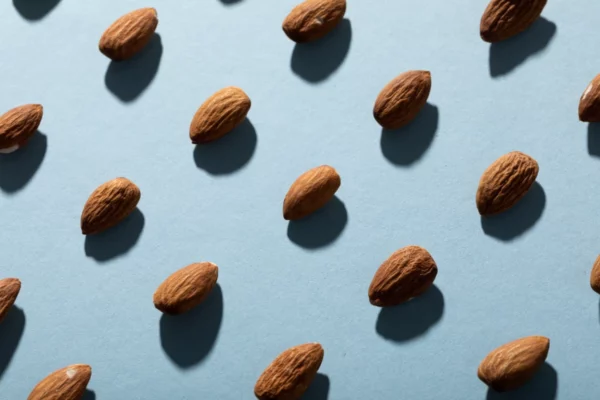Are you feeling stressed, overwhelmed, and constantly on edge? Your body’s cortisol levels might be to blame. Cortisol, also known as the stress hormone, plays a crucial role in our body’s fight-or-flight response. However, chronic stress can lead to elevated cortisol levels, which can have detrimental effects on our physical and mental well-being.
In this article, we will explore proven strategies that can naturally lower cortisol levels and restore balance in your life. These strategies are backed by scientific research and have helped countless individuals regain control over their stress levels. We will cover many effective techniques, from incorporating stress-reducing activities into your daily routine to making dietary and lifestyle changes.
Implementing these strategies can reduce cortisol levels and improve your overall health and well-being. So, if you’re looking for ways to combat stress and restore balance in your life, keep reading to discover the top proven strategies to naturally lower cortisol levels.
.
Key Takeaways Table
| Key Takeaway | Detail |
|---|---|
| Cortisol Basics | Understanding the role and effects of cortisol is crucial for overall health management. |
| Cortisol and Health Impacts | Elevated cortisol levels can lead to health issues like weight gain, mood fluctuations, and impaired immune function. |
| Cortisol Diet Guidelines | Incorporating a diet rich in lean proteins, complex carbs, healthy fats, and hydration can regulate cortisol. |
| Specific Foods for Cortisol Balance | Magnesium-rich foods, omega-3s, and probiotics can help in managing cortisol levels. |
| Lifestyle Changes | Regular exercise, quality sleep, stress management, and spending time outdoors are essential for cortisol regulation. |
| Supplements and Herbs | Certain supplements and herbs like ashwagandha and omega-3 fatty acids can assist in cortisol balance. |
| Professional Guidance | Consulting healthcare professionals for personalized cortisol management strategies is recommended. |
Understanding Cortisol: The Stress Hormone
Cortisol, known as the stress hormone, is essential in our body’s fight-or-flight response. Produced by the adrenal glands, it aids in managing stress but, when elevated for extended periods, can lead to various health issues such as increased blood pressure, weight gain, and mood swings.
The Cortisol Diet: A Nutritional Approach to Balance
A cortisol diet meal plan focuses on foods that regulate cortisol production. Key components include lean proteins, complex carbohydrates, healthy fats, and various fruits and vegetables. Staying hydrated and limiting your intake of processed foods, sugary snacks, and beverages is vital.
A Sample Cortisol Diet Meal Plan
- Breakfast: Vegetable omelet with whole grain toast and avocado.
- Lunch: Grilled chicken or salmon with steamed vegetables and quinoa.
- Snack: Greek yogurt with berries or almonds.
- Dinner: Grilled tofu with brown rice and roasted vegetables.
- Evening Snack: Pumpkin seeds or chamomile tea.
Essential Foods for Cortisol Management
- Magnesium-rich foods: Almonds, avocados, black beans, spinach, and yogurt.
- Omega-3-Rich Foods: Fatty fish, chia seeds, flax seeds, and walnuts.
- Prebiotic and Probiotic Foods: Artichokes, bananas, kimchi, and yogurt.
Lifestyle Changes for Cortisol Regulation
Incorporating regular exercise, ensuring adequate sleep, practicing mindfulness, and spending time outdoors can significantly lower cortisol levels. Physical activity, in particular, has been shown to be effective in reducing cortisol.
Supplements and Natural Remedies
Natural supplements like ashwagandha, rhodiola, and magnesium can aid in managing cortisol levels. However, consulting with healthcare professionals before starting any new supplement is crucial.
Professional Assistance for Cortisol Balance
Seeking professional guidance from healthcare practitioners or therapists can be beneficial, especially if struggling to manage cortisol levels or experiencing persistent symptoms of stress.
In conclusion, effectively managing cortisol levels involves a combination of a balanced diet, regular physical activity, stress management techniques, and possibly the use of natural supplements. This holistic approach not only helps in regulating cortisol but also contributes significantly to overall health and well-being.
Frequently Asked Questions about the Cortisol Diet Meal Plan
1. How can the cortisol diet meal plan help lower cortisol levels?
The cortisol diet meal plan focuses on incorporating nutrient-dense foods, especially those rich in fiber, to promote fullness, manage blood sugar levels, and support a healthy metabolism. You can help regulate cortisol levels and restore hormonal balance by nourishing your body with the right nutrients.
2. What fiber-rich breakfast options are in the cortisol diet meal plan?
A great fiber-rich breakfast option is overnight oats. They are easy to prepare and loaded with nutrients. Check out our guide on how to make overnight oats for 21 delicious recipes to get you started.
3. Why are whole grains vital in the cortisol diet meal plan?
Including whole grains in your meals helps control blood sugar levels and provides sustained energy. Ancient grains like quinoa and spelt are excellent choices due to their high fiber content and nutritional benefits. Take a look at our articles on whole grain spelt and quinoa to learn more about their advantages and ways to include them in your diet.
4. Can fiber supplements support the cortisol diet meal plan?
Fiber supplements can be a valuable addition to the cortisol diet meal plan. They help bridge any nutritional gaps and enhance the benefits of dietary fiber intake. Check out our list of the 13 best plant-based fiber supplements to find the perfect supplement to support your journey toward hormonal balance.
5. What other dietary factors should I consider for cortisol balance?
In addition to incorporating fiber-rich foods and whole grains, remember to consume a balanced diet that includes lean proteins, healthy fats, and a variety of fruits and vegetables. Stay hydrated with fiber-rich beverages and limit your consumption of processed and sugary foods.
6. How long does it take to see results from the cortisol diet meal plan?
Achieving hormonal balance takes time and consistency. While individual results may vary, giving yourself at least a few weeks to start noticing improvements in your overall well-being is important. Stay committed to the cortisol diet meal plan, and be patient with yourself as you gradually change your diet and lifestyle.
Remember, it’s always best to consult with a healthcare professional or a registered dietitian before making significant dietary changes if you have any specific health concerns or conditions.









